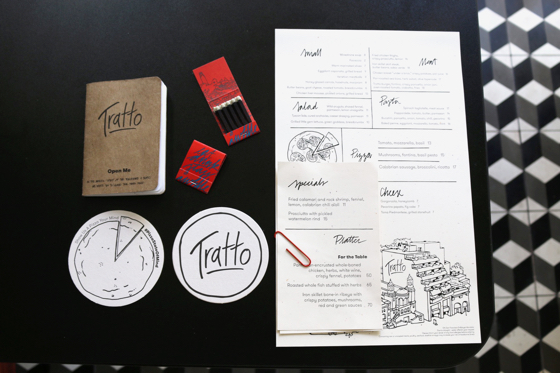It’s something we often hear from our clients: as much as they’d like to invest in comprehensive pre-opening marketing for their restaurant, they don’t have the budget to do so. After expensive renovations and startup costs, marketing often seems like an area that can easily be cut. Less outwardly critical than kitchen equipment or server uniforms, marketing has a cumulative effect that builds over time, adding lasting value and building an important foundation for a restaurant’s long-term success. The reality is that without a strong brand and dedicated pre-opening marketing efforts, the startup investment toward opening or relaunching a restaurant is at risk.
In a perfect world, marketing budgets would be consistently healthy and robust. However, more often than not, restaurant operators must be highly selective and efficient with use of available funds. Here is a tried-and-true list of five strategies—musts to guide marketing efforts.
Build a cohesive brand. The first step in building brand equity for a restaurant is creating a memorable, differentiated brand that fits a specific market and clearly expresses the restaurant’s central concept. Determining an appropriate name and crafting a visually evocative mark is just step one in this process. Other guest touch points—such as menu design, signage, coasters, check presenters, uniforms and tabletop items—are equally important elements that, when thoughtfully developed to fit the concept, easily offer ROI in the form of brand recognition, favorable reviews and market share.

Invest where it counts. Traditional advertising is often the preferred tactic of a lazy marketer. It’s easy to tout circulation rates and impressions without evaluating the actual impact an ad makes. It’s safe to say that people are overwhelmed by the amount of advertising that bombards them in their daily lives, and are far more likely to select a restaurant based on their own research or a word-of-mouth recommendation from a trusted source. In moderation, however, advertising is still an effective method for generating awareness. We often recommend placing an emphasis on non-traditional (and lower-cost) forms of advertising such as digital, social, and content marketing, which are both efficient and measurable tactics.
Harness the power of digital. A standalone website is one of the best marketing tools available to a restaurant. Unlike F&B offerings that are hidden within the architecture of a hotel website, a visually appealing, legible website signals to the guest the spirit of a thoughtfully concepted dining experience. Along with social media channels, it’s a crucial digital platform for telling great stories about your restaurant and its offerings.
Fuel the word of mouth marketing machine. Marketing is not just what you say about your brand—it’s what others say about it, too. With every guest visit comes an opportunity to create an authentic brand advocate. Delighting each guest with an experience that over-delivers on expectations is one of the best ways to encourage word-of-mouth promotion. Also keep in mind that “social speaks louder than words” and emphasize share-worthy moments within your dining experience. Go beyond the hashtag call-to-action and create something that will inspire a photograph—whether it’s a creatively plated dessert, witty comment card or eye-catching piece of art.
Make the restaurant your sales calling card. A strong restaurant reputation will go a long way toward selling catering and special events throughout the hotel. Celebrate the culinary leadership within your sales materials and seek opportunities to create parallels across the menus, or wherever it makes sense operationally. Regardless of the space your guest ultimately books, the restaurant is the brand that will bring leads through the door.
Contributed by Kiira Mancasola, vice president of branding and marketing, Puccini Group, San Francisco
